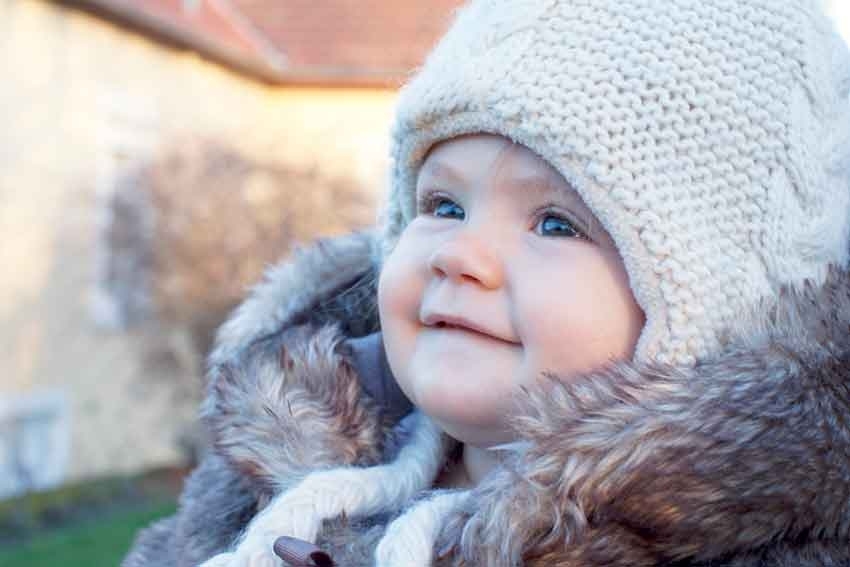How to Keep Your Baby Warm

Your baby loses heat four times faster than you do; her internal thermometer isn’t well developed. Here are tips to ensure your little one isn't cold this winter.
Bundling up on frigid days is a necessity for people of any age, but especially for babies, who are more vulnerable to the cold than adults. Your baby loses heat up to four times faster than you do, in part because her internal thermometer isn’t well developed yet.
Babies also have a larger skin surface area than adults through which they can lose heat, and they can’t generate warmth quickly enough to make up what they’ve lost. And while adults shiver to keep warm, babies don’t yet have that ability.
Premature infants have an especially hard time controlling their body temperature. When babies are exposed to the cold for too long, they can develop hypothermia, a life-threatening drop in body temperature. Exposed skin on little fingers, toes, and noses succumbs to frostbite much faster than an adult’s skin would.
YOU MIGHT ALSO LIKE: Our Newborn Care section
Dressing baby for cold weather
During the first few weeks of your baby’s life, you’re better off keeping him indoors on bitterly cold days. When you do go out, the American Academy of Pediatrics recommends dressing your baby in layers. Add one more layer than you would normally use. Start with a cotton shirt or onesie, add a fleece shirt or sweater, then add a waterproof down or polyester snowsuit or bunting. You can also wrap a blanket around your baby.
Make sure your infant is covered from top to toes. Babies lose heat fastest through their head, so a hat is essential. Add mittens and boots to keep her hands and feet toasty. To prevent overheating, remove layers if the weather warms or you bring your baby inside.
Dressing for bed
At night, put your baby to bed in sleepwear that’s appropriate to the temperature in your home. Lighter weight bedtime clothing is better because you don’t want your baby to overheat. A one-piece footed sleeper or sleep sack will keep your baby comfortable and warm.
Avoid blankets or quilts, which can slide over your baby’s face and increase the risk for sudden infant death syndrome (SIDS). If you do use a blanket, make sure it’s thin and reaches only up to your baby’s chest. Tuck the blanket under the crib mattress to secure it in place.
To swaddle, or not to swaddle?
Should you swaddle your baby, wrapping a blanket snugly around him for sleep? Swaddling has been the subject of some debate in recent years. The technique has a few plus sides. The pressure feels comforting to babies, reminding them of the cozy warmth of the womb. Swaddling also helps babies fall asleep faster and stay asleep longer.
Yet swaddling a baby too tightly can restrict hip movement, possibly leading to hip dislocation or dysplasia. Another concern is that babies can roll over and accidentally suffocate on the bedding. Swaddling also reduces an infant’s ability to wake up, increasing the risk for SIDS.
If you plan to swaddle your baby, do so safely.
“If babies are swaddled, they should be placed only on their back and monitored so they don’t accidentally roll over,” said Rachel Moon, MD, FAAP, chair of the task force that authored the American Academy of Pediatrics’ Safe Sleep Recommendations. “I would stop swaddling by age 2 months, before the baby intentionally starts to try to roll.”
Keep the swaddling blanket loose enough that your baby’s legs can bend. Don’t let your child get overheated. If her cheeks are flushed, her hair is wet, or her breathing rate has quickened, remove the blanket.
Updated:
October 26, 2023
Reviewed By:
Janet O’Dell, RN